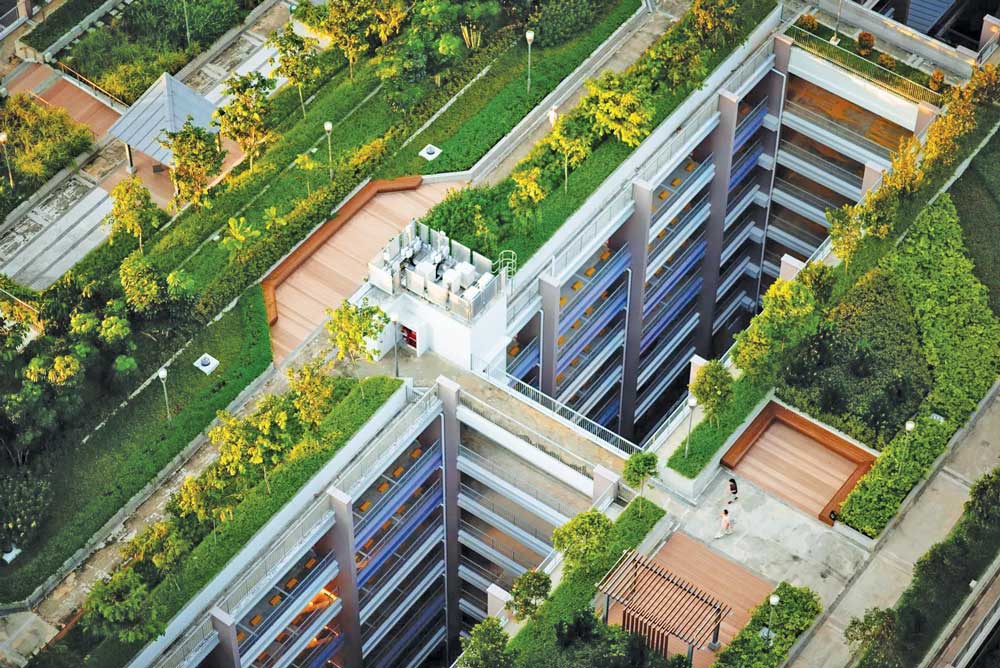How REAL ESTATE SECTOR has taken the GREEN CHALLENGE
The real estate sector is a significant contributor to the world's environmental footprint, yet only recently the industry has begun to take the green challenge more seriously. Today with net zero commitments the focus is fast moving towards a more sustainable future. The first step would be to lay a pathway to reduce emissions. The path to net zero is not about focusing on what is happening today, but also having a detailed plan that takes into account the short, medium and long term goals for a sustainable future.


- Shrinivas Rao, CEO, Vestian
The real estate sector is a significant contributor to the world's environmental footprint, yet only recently the industry has begun to take the green challenge more seriously. Today with net zero commitments the focus is fast moving towards a more sustainable future. The first step would be to lay a pathway to reduce emissions. The path to net zero is not about focusing on what is happening today, but also having a detailed plan that takes into account the short, medium and long term goals for a sustainable future.
One of the most important ways that the real estate sector can contribute to climate action is through construction of green buildings. Green buildings typically aid in efficiency and minimize energy along with lowering the impact of all other environmental factors during the building's life cycle: design, construction, procedure, preservation, restoration and demolition. There are various green building standards like LEED, BREEAM, IGBC, CASBEE, DGNB certifications that act as a benchmark for sustainability. Tangible benefits can be seen in operational savings, energy and water efficiency and waste reduction. Green buildings are usually around 25-30% more energy efficient; LEED gold rated buildings around 37% more efficient. They utilize 20-30% less water than conventional buildings; and 70-100% of used water is recycled and reused for air conditioning and landscaping. Green buildings also recycle construction and demolition waste, and reuse it in their buildings, thus reducing waste by around 50%.
The intangible benefits include cleaner air and natural light (75-90%), better ventilation, and exposure to less toxic interiors as low-emitting adhesives, wood and paints (lesser wood usage implies that trees are planted, and forests are not completely demolished). Also, the decreased operating cost over one and five years seem to be the driver for green building growth along with the longer payback time for green investments.
Additionally to make buildings environmentally sustainable, some key factors such as clean and efficient renewable energy sources (solar panels, windmills and geothermal energy), options such as rainwater harvesting and waste management, low carbon technologies, reusing and recycling of building materials, earthquake and fire resilient structures, smart electricity grids, and environment friendly transportation options are naturally being taken into consideration to boost low-carbon infrastructure.
Another way in which the sector has taken up the green challenge is through incorporation of green spaces, such as parks and gardens, in their developments. Green spaces help reduce the urban heat island effect, improve air quality, and provide a place for people to relax and enjoy nature. A large number of real estate developers are now incorporating green spaces into their developments, both on the ground and on rooftops. This not only helps promote sustainability but also enhances the overall liveability of the development.
While the real estate sector has started adopting green construction, sustainable and energy-efficient strategies in the construction of new buildings, the overall impact is still meagre. There remains much work to be done, and the sector must continue to innovate and find new ways to reduce environmental impact. As the population continues to grow and the demands on the built environment increase, it is now more important than ever that the real estate sector takes the green challenge earnestly. The sector needs to work hand in hand with other stakeholders to create a carbon-free environment and protect the climate for future generations. Innovation is the key to progress, and the real estate sector will do well to recognize and implement various approaches that lead to achieving a greener and sustainable future.
Hits: 0







